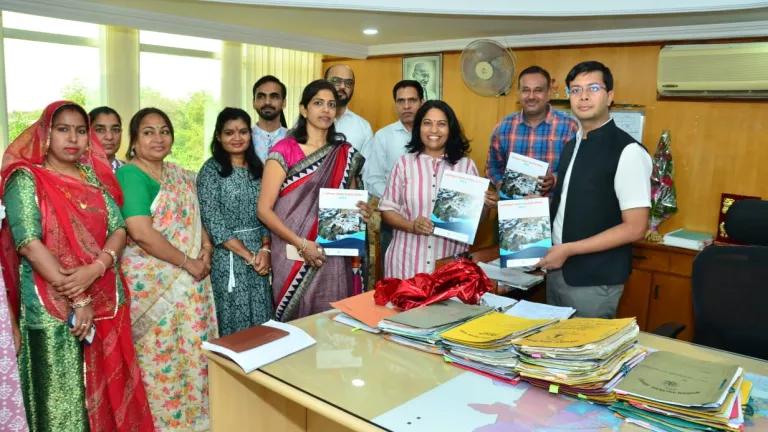While in the U.S. some political leaders unbelievably debate whether climate change is happening, India is looking ahead to how climate change will impact its rapidly growing economy. India recently released the first-ever scientific study that assessed the impacts of climate change by 2030 on agriculture, health, water and forests and underscores India’s vulnerability to climate change – including extreme drought and monsoons, rapid sea level rise, and fluctuating rice and corn yields.
The timing of India’s climate report, just before the Cancun discussions, supports India’s recent efforts in increased cooperation on transparency and science. The study is also important to meet India’s Copenhagen target to cut emissions intensity by 20 to 25 percent by 2020 from 2005 levels, and drive domestic climate actions while building a resilient, low carbon economy, as my colleague Jake Schmidt recently discussed here.
The report, “Climate Change and India: A 4 x 4 Assessment, A Sectoral and Regional Analysis for the 2030s,” assesses projected climate impacts in key areas of the Indian economy in four separate climatic regions of India (the Himalayas, the Western Ghats, coastal areas, and the Northeast). In releasing the report, Environment Minister Jairam Ramesh emphasized, “There is no country in the world that is as vulnerable, on so many dimensions, to climate change as India is. We must continue this focus on rigorous climate change science.” The study also supports the need to take domestic and international action on both curbing emissions and preparing for climate disasters.
Key findings of the study are:
Overall Climate Change Projections - All of the four regions examined indicate an overall warming of 1.7-2.2 degrees Celsius, including extreme high and low temperatures by 2030.
Intense Precipitation - Rainfall and snowfall patterns are projected to increase and intensify in India, adding 5-10 annual days of extreme events in all four regions by 2030.
Sea Level Rise - Sea level rise in India has been increasing by 1.3 mm/year, which is consistent with IPCC projections and is anticipated to continue to rise; cyclones will intensify, while the number of cyclones decline.
Floods & Droughts - All four regions are expected to experience a 10-30 percent increase in the magnitude of flooding existing levels; droughts are expected in most of the regions with the Himalayan region experiencing moderate to extreme drought severity.
Crop Production - Rice, corn, and sorghum yields will fluctuate in India. While a few areas are projected to see a modest (4 percent) increase in rice yields, others will see sharp declines (as high as 50 percent) in rice, corn, and sorghum yields.
Livestock - Cattle, pigs, goats and other livestock are all predicted to be highly vulnerable and stressed, including reduced milk production, as a result of increased temperatures, especially in the months of May and June.
Fisheries - Sardine and mackerel populations are likely to shift populations northward and some populations may increase overall yield.
Forests/Biodiversity - All of the four regions are vulnerable to climate change in the short term, with changes ranging from 8-56 percent in vegetation cover.
Human Health – Malaria and other vector-borne diseases are projected to spread to northern regions while the malaria transmission window may decline in coastal areas.
In a concluding “Way Forward” section, the report finds that India must continue to build its capacity to produce data on the impacts of climate change. Specifically, it calls for improved data sharing between Indian institutions and agencies gathering relevant data. It also outlines the need to increase systematic observations taking place over long periods, and to integrate more climate models into future studies. Finally, it concludes that all regions will need detailed studies on impacts relevant to them, and that this could be done on a state-by-state basis.
The report is the second report by the Indian Network of Climate Change Assessment (INCCA), a network of over 120 institutions and 220 scientists formed last year to further Indian climate science. In May, my colleague Shravya Reddy blogged about INCCA’s first report, a comprehensive assessment of India’s 2007 greenhouse gas emissions, released in May of this year. INCCA’s next report, expected in May 2011, will examine the causes and impacts of black carbon in India.
India’s recent report shows an urgent need to move beyond studies and information sharing. When our leaders meet in Cancun, the study shows that it is imperative for nations to work together to drive action at home and internationally to curb greenhouse gas emissions, protect our global economy from climate change, and build reliance in local communities against climate disasters.
Co-authored by Michael Thompson in New Delhi.



